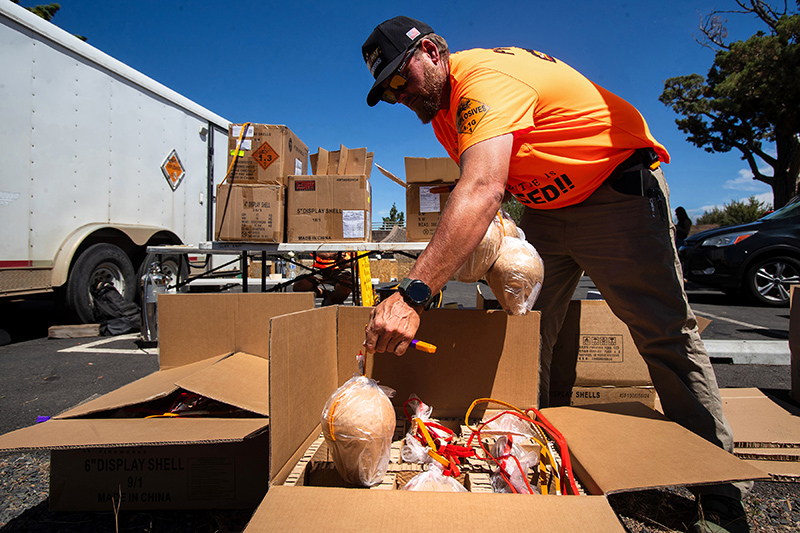Improving running form
Published 4:00 am Thursday, February 17, 2011

- Bad Form: Some common running form mistakes creates inefficient running and can contribute to injuries. Bad Posture, Overstriding, Heel-strike
Running, which can be a highly efficient and satisfying form of exercise, has in many cases become synonymous with injury and pain. It doesn’t have to be that way, according to a growing number of running experts.
Running form — from the tilt of the pelvis to the stride of the legs — has been under scrutiny in recent years, resulting in a widespread movement to rethink the way runners move.
The intention is mainly to prevent knee, foot and hip injuries and to keep people running longer. It might make them faster, too.
There are several methods that aim to improve running form. Most share overlapping principles. One method, aptly called Good Form Running, is taught at a local running shoe store.
“I had quit running for 10 years … because I always got hurt,” said John Benedict, one of the Good Form Running founders and an owner of Playmakers, a running supply store in Michigan. “All I did was change my form and I can run again.”
Using the new style of running, he and his business partner — both in their 50s — felt better during and after long runs. They started teaching the technique in their shop a few years ago, and then taught it to other store owners across the country who could pass it on to their customers. The method is not based on scientific studies, he said, but on personal experience and anecdotal evidence.
“There’s probably no one singular form for everybody, but we just wanted to get people thinking that it’s important how their bodies move along the earth,” he said.
How it works
The four principles of Good Form Running are: 1) posture — run tall and relaxed; 2) midfoot — land on the fatty central part of your foot, (the outer side of the ball of the foot); 3) cadence — make 180 steps per minute; and 4) lean — gently forward from the ankles (see “The Four Points”).
During the free Good Form clinic at Footzone in Bend on a recent Saturday morning, 12 runners of varying age and experience listened as store manager Colleen Moyer led a whole-body alignment technique to correct posture. When she discussed cadence — which she said is the primary principle to remember from the clinic — a metronome ticked while everyone stepped in place. The Four Points are intended to make a runner “lighter, smoother and quicker off the ground,” she said. “That’s what we’re going for.”
Feet should push behind the body, not stretch out in front. Think of a skateboarder powering himself forward with a leg stroke behind him, she said. This uses the calves and hamstrings more. Even a fit, experienced runner might feel sore muscles after trying it.
At the beginning of the clinic, the runners lined up and jogged through the store one at a time as Moyer recorded video of them from the side. Then — here’s the part Footzone managers don’t tell you until the last minute — Moyer told them to take off their shoes and run for the camera again. At the end of the 90-minute clinic, participants watched themselves, in stop-action, frame-by-frame playback, with a new perspective.
Most of the runners saw themselves striding out and heel-striking with shoes on. Heel-striking creates an inefficient braking effect, experts say. And the jarring impact transfers up the leg and can create foot, ankle and hip injuries.
When barefoot, the body moves differently. A lot of class participants saw their feet landing on the fatty midsoles instead of their hard bony heels. It was more of a pitter-pat, more like the form Moyer was preaching.
But Moyer was not advocating running barefoot. She suggested that people think about the way they run, and maybe incorporate some changes. Minimalist shoes — with less support and padding than the traditional clunky running shoe — can help discourage a heel-strike landing. A small number of runners have switched to Vibram FiveFingers, a shoe that offers no support or padding, just minimal protection against sharp and rough surfaces, which structurally would be much like running barefoot.
The shoe question
Daniel Leiberman, a Harvard University professor of human evolutionary biology, and his colleagues have done the most applicable studies about foot-striking patterns in barefoot versus shod runners. His 2009 study said that for the millions of years that humans ran prior to the 1970s, they wore sandals or moccasins with smaller heels and very little, if any, cushioning. Those runners, the study said, would most often land on the forefoot or the midfoot before bringing down the heel. In contrast, shod runners mostly heel-strike, facilitated by the elevated and cushioned heel of the modern running shoe.
The study concluded that the barefoot form probably protected the lower body from some of the impact-related injuries now experienced by a high percentage of runners.
However, Leiberman’s website clarifies: “While there are anecdotal reports of barefoot runners being injured less, there is very little scientific evidence to support this hypothesis at this time.” His site does not advocate any particular running form, nor does it suggest that runners should ditch their shoes.
The running shoe as we know it has Oregon roots. Seeking better traction and cushioning, University of Oregon track coach and Nike co-founder Bill Bowerman developed a new kind of padded running shoe, revolutionizing the sport in the 1970s. Runners could fly down the track, legs flying forward, heels landing first.
Often revered as one of Oregon’s notable people, Bowerman takes some heat for his invention in Christopher McDougall’s 2009 national best-seller, “Born to Run,” which chronicles American endurance runners as they embarked on an adventure race with the super-runner (and scantily shod) Tarahumara Indians of Mexico’s isolated Copper Canyons. The book, popular in running circles, dedicates many pages to conversations about — or against — running shoes.
“Blaming the running injury epidemic on big, bad Nike seems too easy — but that’s okay because it’s largely their fault,” McDougall wrote in the often-witty book. “The company was founded by Phil Knight, the University of Oregon runner who could sell anything, and Bill Bowerman, the University of Oregon coach who thought he knew everything. Before these two men got together, the modern running shoe didn’t exist. Neither did most modern running injuries.”
A broader perspective
But experts say shoes and the form they’ve facilitated are not solely to blame for every runner’s pain.
“A lot of injuries are related to overstriding and landing on the heels instead of the midfoot,” said Julia Valentour, an exercise physiologist with the American Council on Exercise. But, she added, “other running injuries come from overtraining, too little rest and recovery, progressing too quickly, poor shoes and hard surfaces, a lack of a proper warm-up and cool-down and other factors.”
Extra pounds can be a factor. “The extra weight places additional stress on joints, especially during high-impact activities like running,” she said.
Some injuries are related to tight muscles. Tight gastrocnemius (calf) muscles can contribute to plantar fasciitis, the inflammation of the fascia on the bottom of the foot that is especially painful when first stepping out of bed in the morning, she said. Tight hip flexors and hamstring muscles are common in runners who don’t stretch enough or who progress their training distance or speed too quickly. This can lead to low back pain, too, she said.
Rob Hollander, a local physical therapist with Alpine Physical Therapy and a marathon runner, agrees. “A person’s skeletal structure, muscle strength, innate ability and training will all manifest in particular injuries. It’s more complex than just form.” But running with good form can only help.
“There’s natural runners, people who are built to run, and there’s others who run because it’s a great form of exercise. Some great runners have this (good) form naturally,” Hollander said. For those who aren’t naturally blessed with the innate perfect form, he figures it’s never too late. Many track or cross-country runners, Hollander said from experience, were not trained in ideal running form.
Take Grant Robison, a standout track athlete at Oregon’s McMinnville High School who went on to compete in the 2004 Summer Olympics men’s 1,500-meter race. During all his years of training, no one really talked about these concepts, Robison said.
He heard some basics, “pump your arms, keep your head still,” he said. Robison, now 32, suffered constant injuries.
After the Olympics he worked at Playmakers, the shop where Good Form Running began, and he hesitantly tried it. Elite and professional runners are often skeptical about changing something that they’ve been so good at, he said. But they are more open to the idea when they’re injured, he said.
“A big part of getting faster is just not getting hurt,” he said.
He started training for the 2008 Olympics. He didn’t make it, “but the remarkable part was, I didn’t have any injuries.”
Now he’s a recreational runner and a Good Form Running ambassador, living in Minneapolis and working for the New Balance shoe company — which has an agreement with Playmakers — to spread the word about Good Form Running.
The Four Points of Good Form Running
1. POSTURE
Reach to the sky to reset your posture, lower arms. Soften knees. Point toes straight ahead. Tuck hips under, the opposite way from how you sit in a chair. Relax shoulders on the sides so the chest is open. Swing arms loosely. Hands should have thumbs on top and be relaxed. Pretend to hold a potato chip between the thumb and a finger. Keep head relaxed but don’t let it weave and bob. Cast eyes about 10 to 15 feet ahead.
2. MIDFOOT
Let the foot land on the midsole instead of the heel. Heel-striking is a breaking mechanism that is inefficient and actually slows runners down. It also creates more of an impact on the entire body. Landing on the forefront, the toes, can cause calf and Achilles strain.
3. CADENCE
The most crucial point to remember. Steps should number 180 per minute. Footzone’s Colleen Moyer counts 45 left foot strikes in 30 seconds to keep her time.
4. LEAN
A gentle flex comes from the ankles, not the hips or waist. It’s natural and slight, will improve body control and prevent unnecessary muscle strain from toeing off.
Source: Colleen Moyer, Footzone manager, and www.goodformrunning.com
Good Form Running clinics
What: Participants learn and practice The Four Points of Good Form Running
When: Alternating Tuesdays at 7 p.m. and Saturdays at 8:30 a.m.
Where: Footzone, 845 N.W. Wall St., Bend
Cost: Free, but registration required; class limited to 12
Contact: 541-317-3568
For more information
www.chirunning.com
www.newtonrunning.com/run-better/optimal-running-form
www.altrarunning.com








